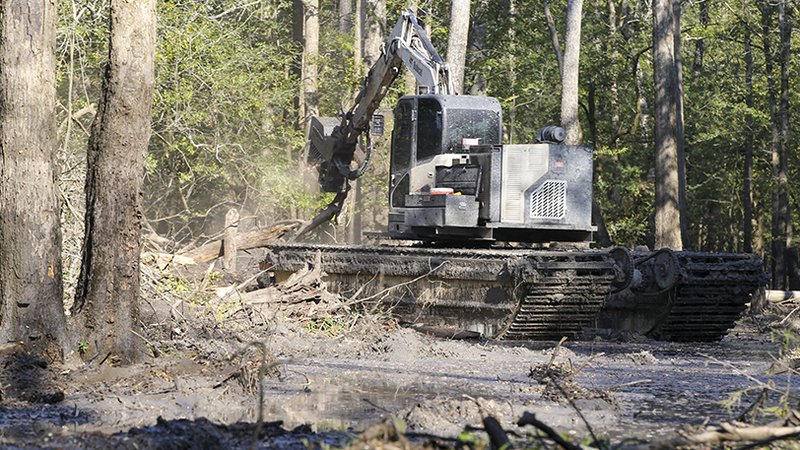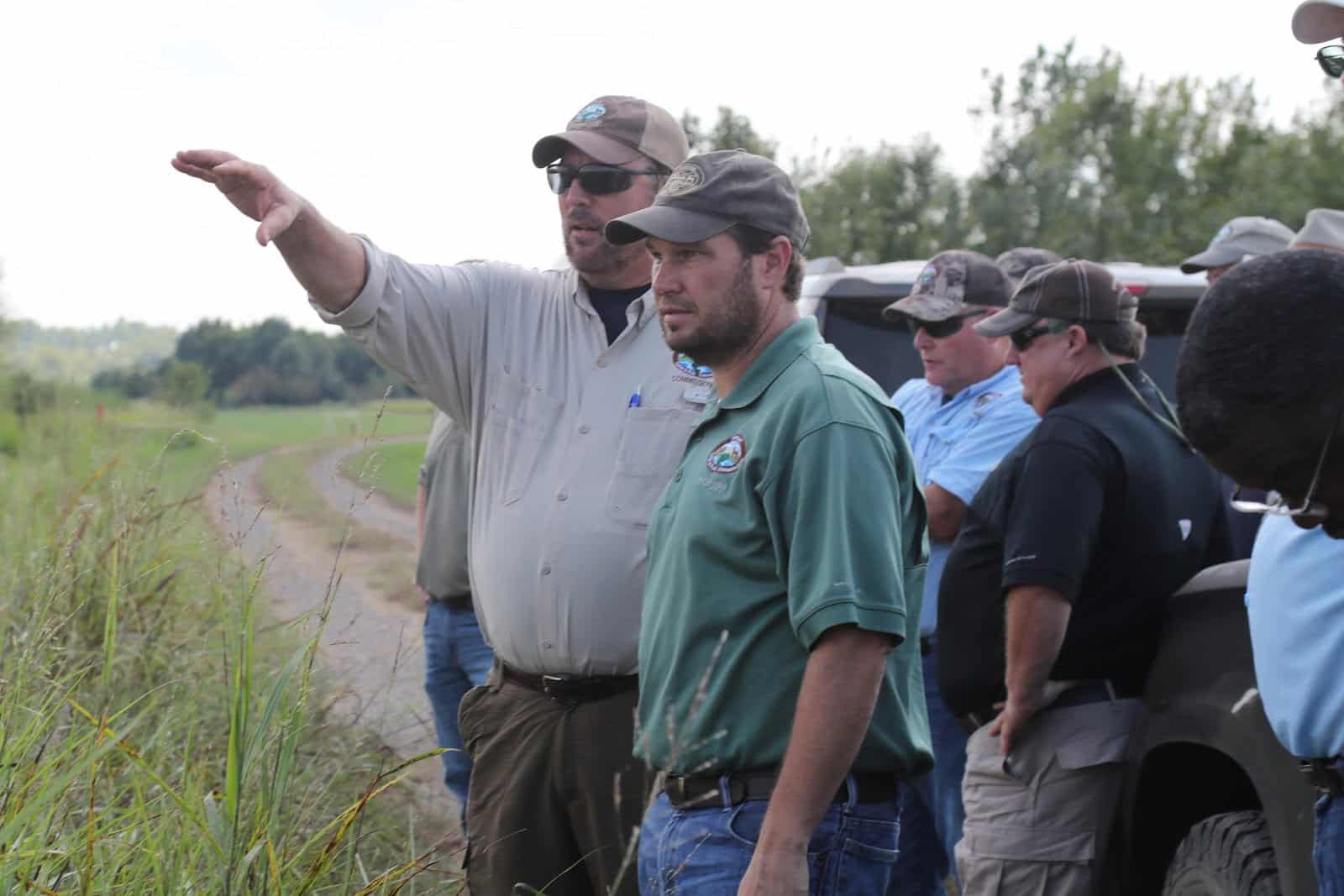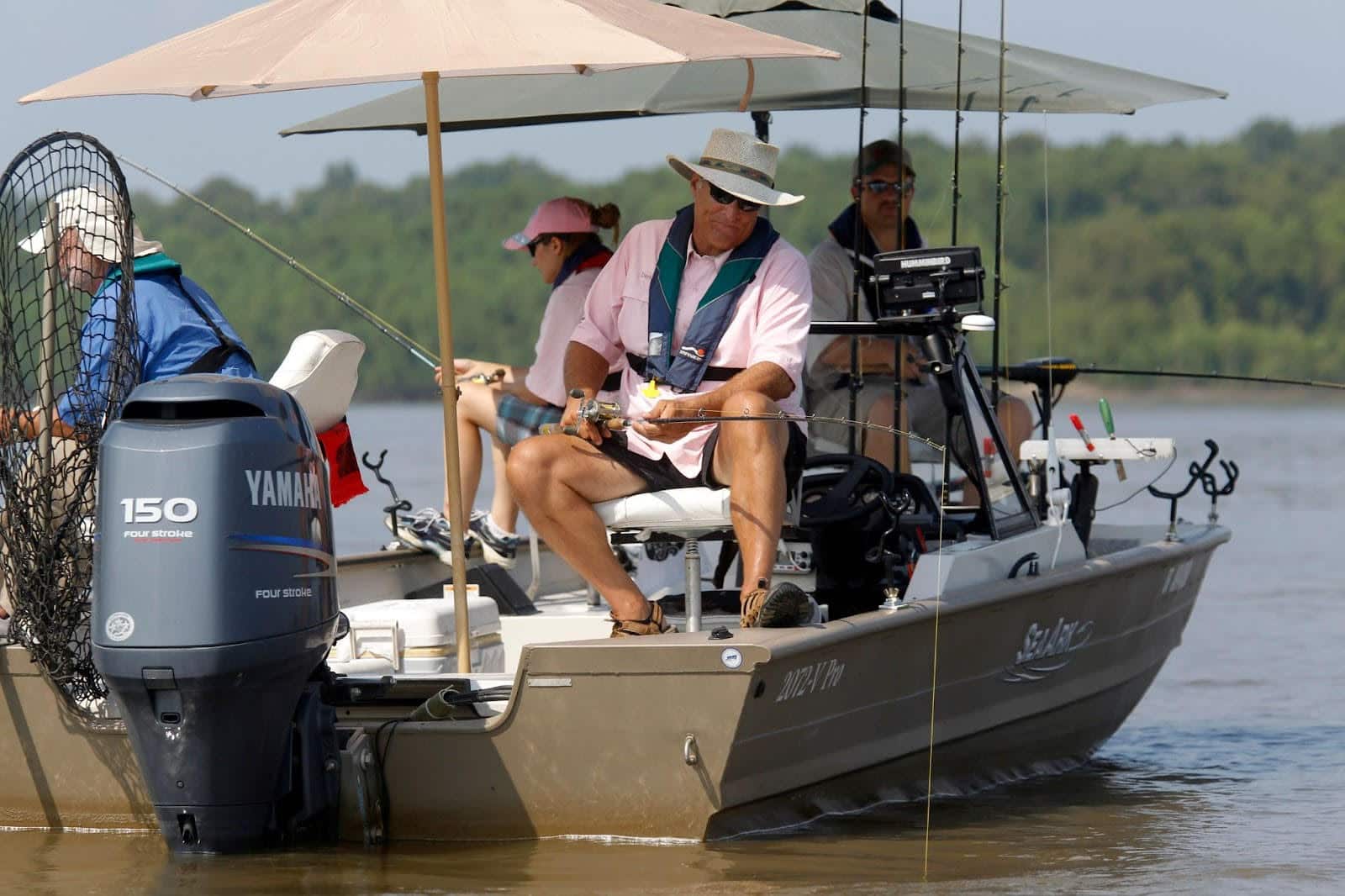Henry Gray WMA drainage project a marathon, not a sprint
BY Jim Harris
ON 09-30-2019

Sept. 30, 2019
Jim Harris
Managing Editor Arkansas Wildlife Magazine
GEORGETOWN — If only opening up the water drainage in a wildlife management area were as simple as pouring in a few hundred gallons of Liquid Plumber. Of course, it’s not. The drainage corridors in the South Unit of the Arkansas Game and Fish Commission’s Henry Gray Hurricane Lake WMA are so clogged, the AGFC summoned a Louisiana company to send two amphibious mulching machines and an amphibious excavator to clear the way for water to drain out of the unit.
Johnny Waldrup, an AGFC biologist supervisor overseeing the project, said the South Unit’s drainage sloughs have, over the years, become clogged with dead and fallen trees, live vegetation, sediment and other debris, restricting the way water can move out of a WMA that’s already in a precarious position, having lost about 1,000 acres of greentree reservoir timber in recent years. The timber die-off, discovered in spring 2018, has been attributed to water remaining on the red oaks during the growing season. The loss of the red oaks is critical in any greentree reservoir, as those particular species provide needed acorns to migrating waterfowl, and as they die off, undesirable species replace them.
The drainage backup was affecting a literal marathon of distance in the South Unit: The drains in the unit total 26.4 miles (0.2 miles longer than the actual distance of a running marathon), Waldrup said, with this year’s first phase clearing about 12 miles. As of Sept. 23, Waldrup says, the contractors had cleared 7 miles of drainage, and the first phase should be completed by Oct. 11.
Beginning Aug. 15, ANU Works (also known as Stan’s Airboat Service) of Iowa, Louisiana, put three amphibious vehicles to work in the South Unit. A portion of a National Fish and Wildlife Foundation Grant to the AGFC, about $150,000 of the total $375,000 that went to the agency, is funding the work. Waldrup said the contractor took a five-day break this week after five weeks of work, with plans to resume the job Monday, Sept. 30.
Waldrup said the AGFC in recent years has mulched the drainage systems at George H. Dunklin Bayou Meto WMA and Dave Donaldson Black River WMA to successfully improve their drainage. Much more infrastructure modifications are needed, such as restructuring water-control structures and levees to promote better water control, but mulching in key areas will help these measures work more efficiently to keep water flowing when they are implemented.
“What we did was, we identified the primary drains in the GTR and that’s where we started with the mulching,” Waldrup said of the Henry Gray WMA plans. “A lot of those drains run through the Mud Pond system … They were just getting overgrown with woody vegetation and debris. Anytime you have a tree fall in there, it’s just a natural barrier to the water, something to block water, slow it down, and allow other debris to accumulate on it.”
Waldrup said much of the debris buildup over the years came from natural tree mortality as well as from tornadoes or high winds that have knocked down trees. Coupled with needing to address the South Unit’s greentree die-off found last year, the AGFC began planning how to handle clearing the sloughs to get water off the unit. Actual work had to wait for the proper permits and until the new fiscal year began, when the grant money came in, said Waldrup, who became involved in the project last year.
Mother Nature also hasn’t been on the AGFC’s side in recent months, Waldrup said: Nearby rivers have been running high from all the rain of late spring and early summer. In normal conditions at this time of the year, the South Unit would be “bone-dry” in most places, he said. Instead, there’s water and the need for amphibious work vehicles.
The dead trees, limbs and other vegetation are ground into chip-size particles and left in the area to decompose back into the system, Waldrup said. “The mulchers need a little bit of water, but only about a foot or so, to work,” he said. “Due to the water being in those drains and not falling out, the only solution was to use an amphibious rig.”
Henry Gray Hurricane Lake WMA gets water into the North Unit from the White River, which then flows through the South Unit and into the Little Red River. Waldrup said the AGFC will employ the same greentree reservoir hydrology plan there that it used last year. No boards will be put in the South Unit to hold water. The North Unit’s boards will go in like the AGFC’s other greentree reservoirs, on Nov. 15. Water will free flow through the South Unit, fluctuating with the rise and fall of the rivers.
Meanwhile, the remainder of the AGFC’s portion of a total $500,000 grant from the National Fish and Wildlife Foundation for projects in the state is helping fund wetland improvement and water control structure work at Steve N. Wilson Raft Creek Bottoms WMA, along with work at Red Cut Slough in Cypress Bayou WMA and at Freddie Black Choctaw Island WMA, Waldrup said.
Recent News

Former Chairman Neeley ‘got back more than I gave’
Jul. 28, 2025
Subscribe to Our Weekly Newsletter E-mails
Don’t miss another issue. Sign up now to receive the AGFC Wildlife Weekly Newsletter in your mailbox every Wednesday afternoon (Waterfowl Reports are published weekly during waterfowl season and periodically outside the season). Fishing Reports arrive on Thursdays. Fill in the following fields and hit submit. Thanks, and welcome!

